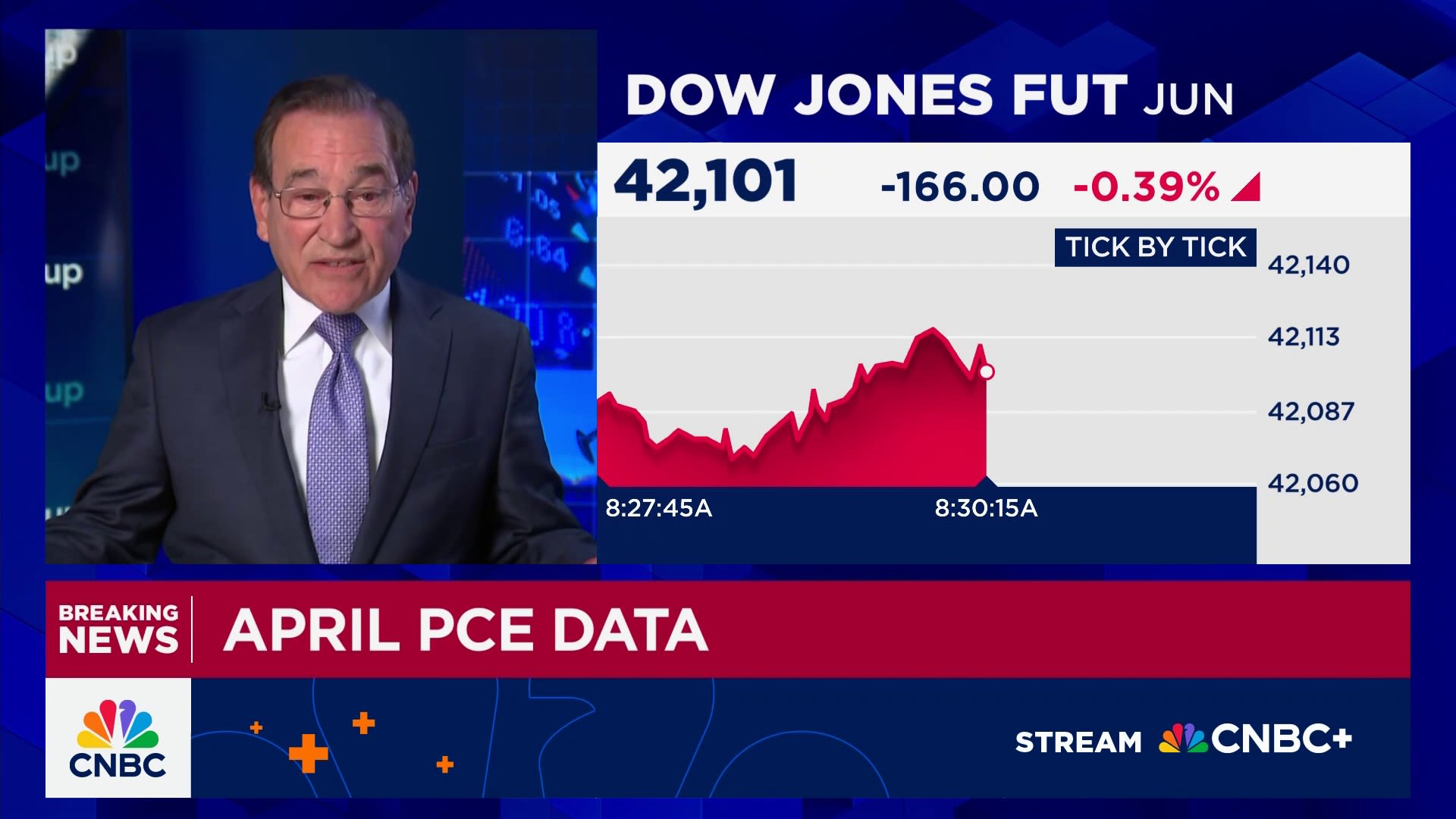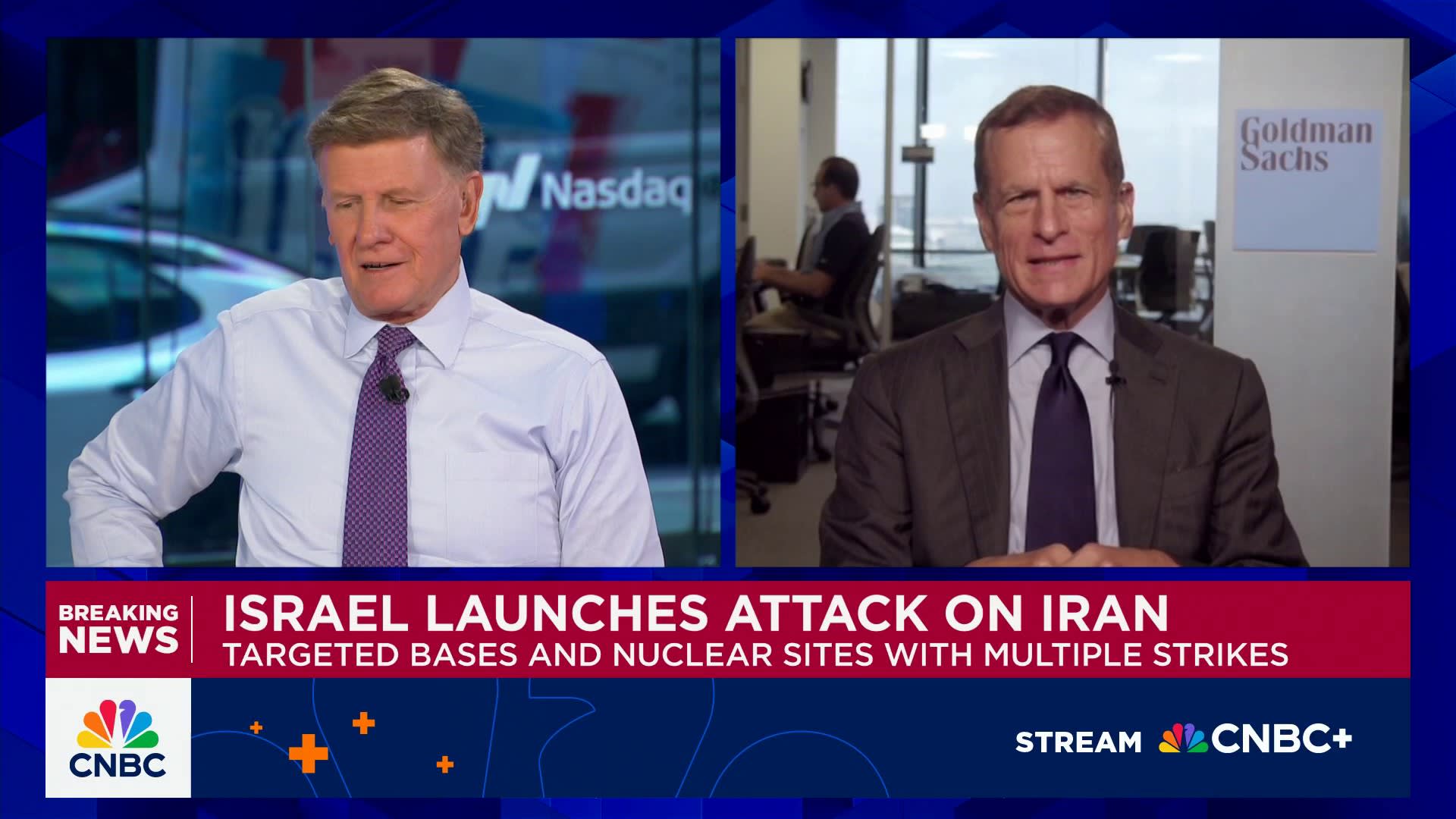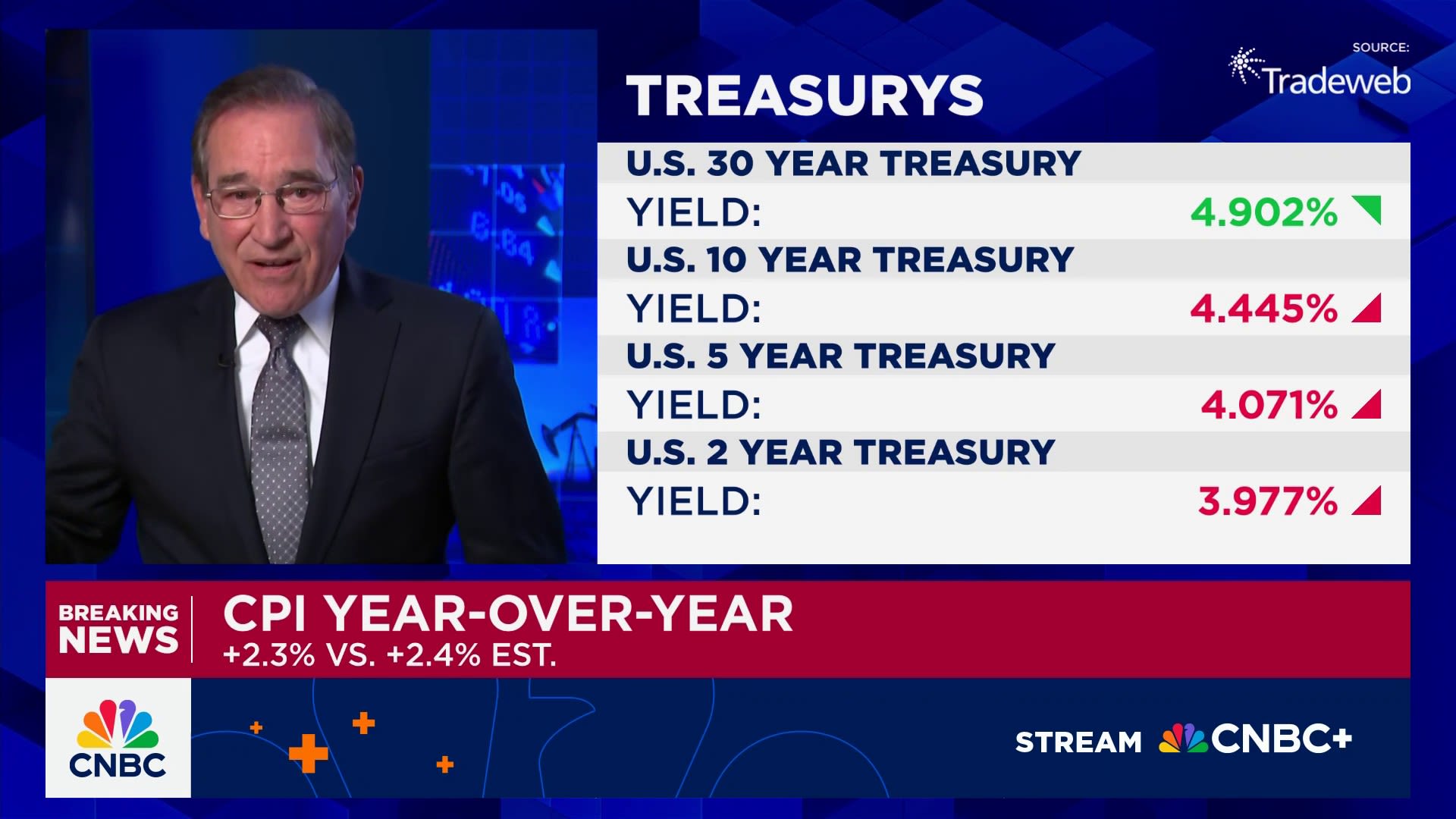19 May 2025, Berlin: Apricots are sold at a greengrocer for 7.98 euros per kilogram. Grapes and papaya are also on offer.
Photo by Jens Kalaene/picture alliance via Getty Images
Germany’s annual inflation hit 2.1% in May approaching the European Central Bank’s 2% target but coming in slightly hotter than analyst estimates, preliminary data from statistics office Destatis showed Friday.
The print compares with a 2.2% reading in April and with a Reuters projection of 2%.
The print is harmonized across the euro zone for comparability.
So-called core inflation, which strips out more volatile food and energy prices, dipped slightly from April’s 2.8% to 2.9% in May. The closely watched services print meanwhile eased sharply, coming in at 3.4% compared to 3.9% in the previous month.
Energy prices fell markedly for the second month in a row, tumbling by 4.6% in May.
Germany’s consumer price index has been closing in on the European Central Bank’s 2% target over recent months, in a positive signal amid ongoing uncertainty about the economic outlook for Europe’s largest economy.
This target should be met in the coming months, Carsten Brzeski, global head of macro at ING, said in a note on Friday.
“Looking ahead, at least in the nearer term, German inflation is likely to continue its downward trend, probably dropping below 2% over the coming months,” he said.
Opposing developments are expected to shape the outlook for inflation, and — paired with lower energy prices — lead to the print hovering around the 2% mark throughout the second half of the year, Brzeski noted.
“On the one hand, the cooling of the labour market should take away wage pressures and consequently inflationary pressures; on the other hand, the government’s fiscal stimulus is likely to push up inflationary pressure towards the end of the year and beyond,” he explained.
Domestic and global issues have mired expectations for Germany’s financial future.
One the one hand, U.S. President Donald Trump’s tariffs could damage economic growth, given Germany’s status as an export-reliant country, though the potential impact of such duties on inflation remains unclear. But frequent policy shifts and developments have been muddying the picture.
On the other hand, Germany’s newly minted government is starting to get to work and has made the economy a top priority. Questions linger about when and to what extent the new Berlin administration’s policy plans might be realized.
The ECB is set to make its next interest rate decision on June 5, with traders last pricing in an over 96% chance of a quarter point interest rate reduction, according to LSEG data. Back in April, the central bank had cut its deposit facility rate by 25 basis points to 2.25%.
ING’s Brzeski said Friday’s German inflation print should bring “relief” to the ECB as it suggests disinflation is continuing, and added that despite the latest developments regarding tariffs, the central bank has a stronger case for a further rate cut than a hold.
German bund yields were slightly higher after the data was released. The 2-year bund yield was up over one basis point to 1.719%, while the yield on the 10-year bund was less than one basis point higher to 2.521%.










